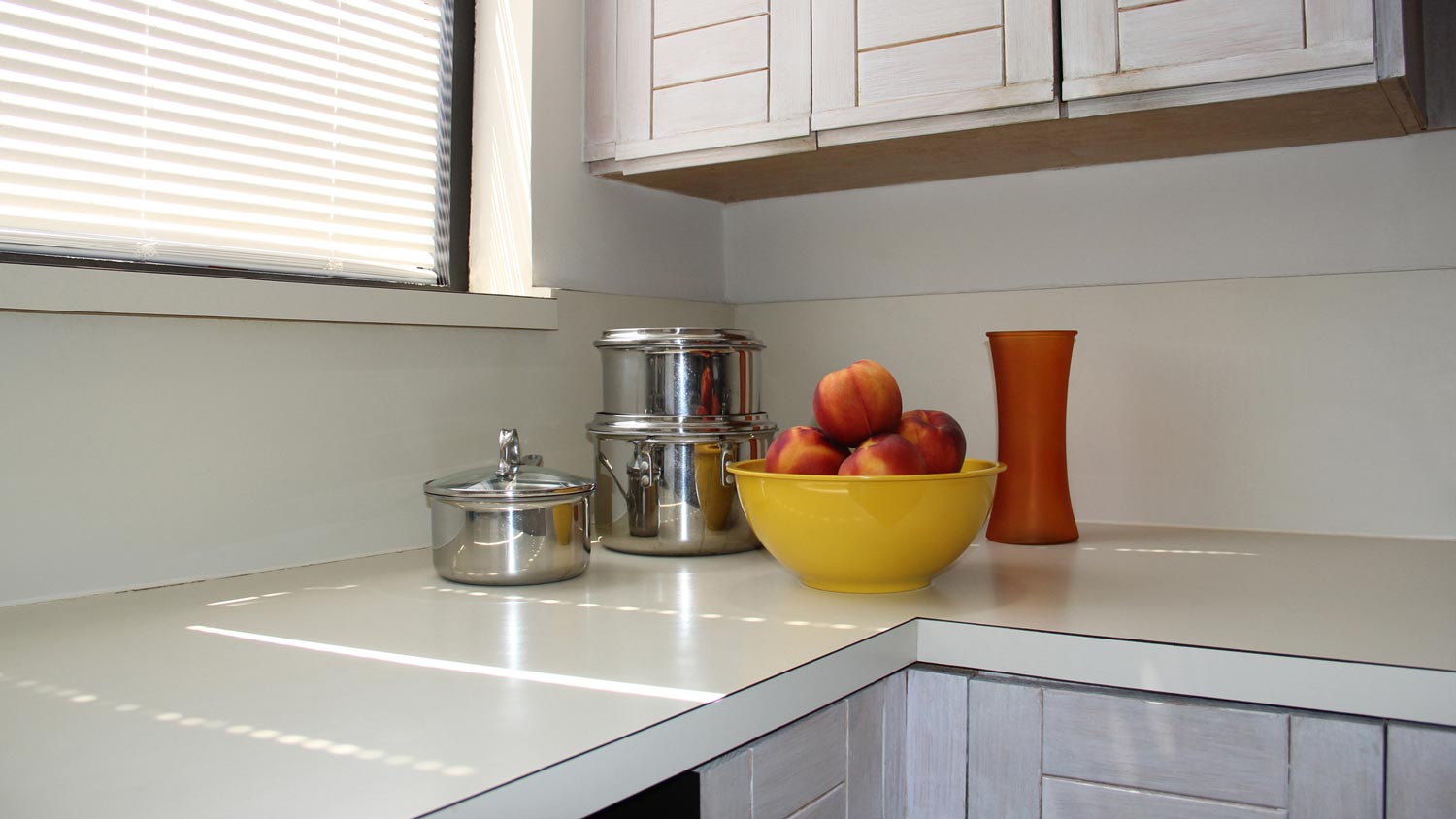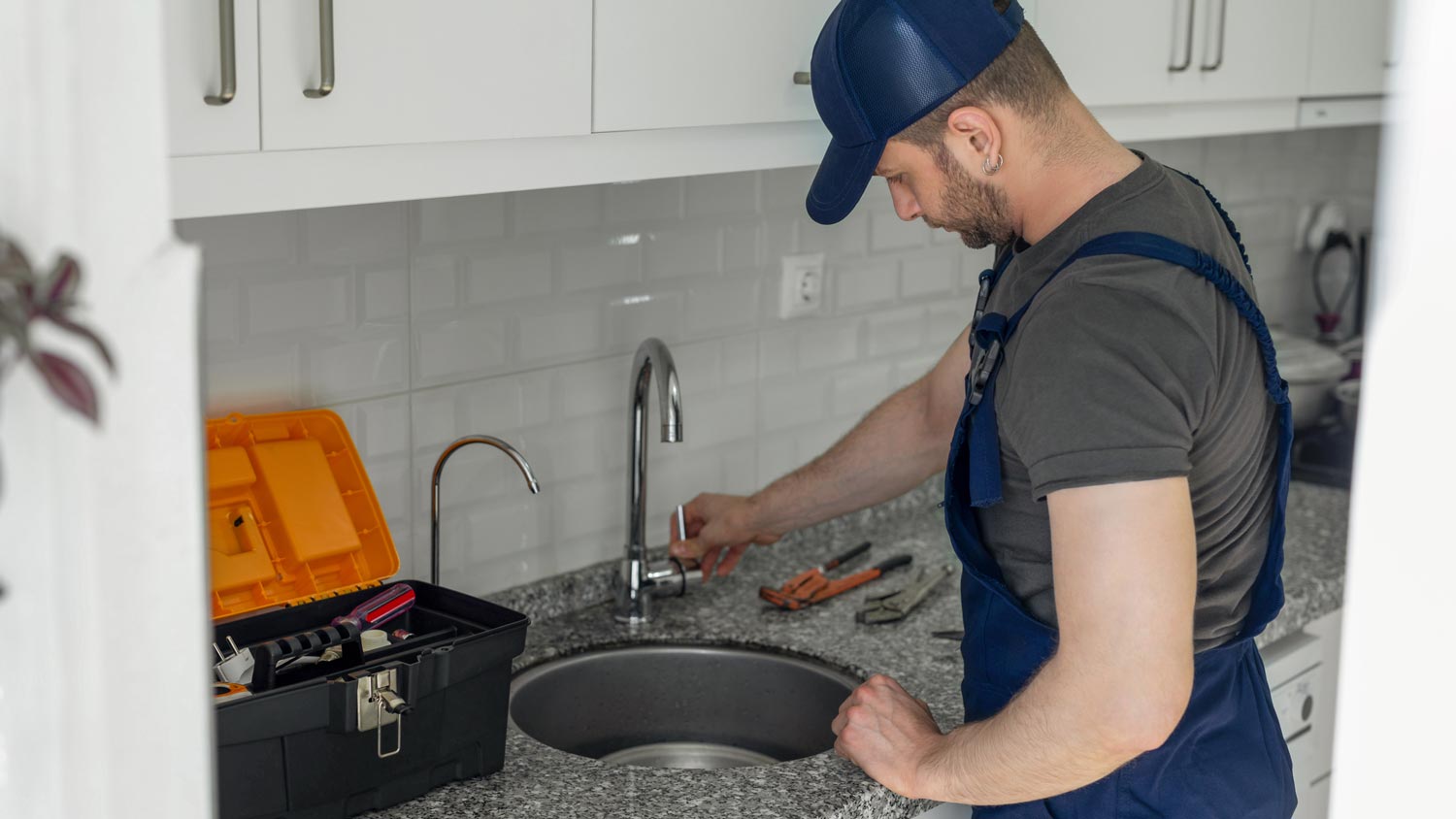
Building a laundry room addition to your home adds value and functionality. Your laundry room addition cost will depend on size, materials, and other factors.
Out with the old, make room for the new


Removing and disposing of countertops requires heavy lifting for a DIYer, with some countertop materials like natural stone weighing as much as 300 pounds.
You’ll need a vehicle large enough to transport your old countertop to the disposal site, while a junk removal company has the necessary tools to perform the job.
If you need to disconnect a gas line to remove your countertop, hire a pro for around $300 to $800 since it’s oftentimes illegal to disconnect a gas line on your own.
Updating your kitchen can be an exhilarating experience, bringing a burst of style and functionality to your home. But wait—what about those old countertops? Do they have to wind up in a landfill?
Our DIY guide serves up how to dispose of countertops, including info on recycling and donation, plus some need-to-know tips for safe removal. Let's get cooking.
Knowing your countertop's recyclability is essential before starting. Properly getting rid of countertops by cycling, reusing, or donating matters for several reasons. Firstly, it's a big deal for the environment. It helps save resources, reduces pollution, and prevents harmful gas emissions from countertops decomposing in landfills. So, your first step is to check out what you’re working with.
Natural materials such as granite and marble are durable and desirable, making them excellent candidates for recycling or repurposing. Recycling centers can often crush these stone countertops into gravel or use them as construction materials for various projects. Additionally, a local countertop fabricator may be interested in reusing the material.
These are engineered stone surfaces made from natural quartz crystals and resins. While recycling options for quartz are limited, some manufacturers may accept them for repurposing or making other products. Additionally, local salvage facilities and nonprofits that sell used building materials may accept quartz countertops. An example is Habitat ReStore. But remember that not every location will accept countertops, so call first.

Solid surface countertops, like Corian, are made from acrylic and other resins, while laminate countertops consist of a particle board base covered with a thin laminate surface. Unfortunately, recycling options for these countertops are limited, and they might need to be disposed of through other methods. They can also get destroyed easily during removal, making them useless.
These can be repurposed or recycled into new wood products if in good condition. However, those with extensive damage or rot might be more suitable for composting. Contact your local waste management for composting options.
Regarding how to recycle tile, you should know that ceramic and porcelain tiles are recyclable when not part of a larger structure like a countertop. Grout and other adhesives make separating and recycling tiles difficult. When that is the case, look for facilities and schools that accept broken tiles for creative use.

Enlist the help of a friend or family member to avoid straining yourself during the removal process, especially if your countertops are stone or quartz. Additionally, if you are removing a significant amount of materials, working with a local junk removal service is a good idea.
Protect surrounding surfaces. Cover the surrounding cabinets, walls, and flooring with drop cloths or cardboard to prevent damage during the removal.
Turn off utilities. Before starting the removal process, turn off the power supply and shut off any water connections or gas lines to avoid accidents.
Disconnect sink and appliances. If your countertops include a sink or an appliance, disconnect them carefully. You may need a screwdriver, wrench, and pry bar.
Start with the backsplash. If your countertop has a backsplash, remove it first. Use a utility knife to cut through any caulking or adhesive, and then gently pry it away from the wall.
Loosen the countertop. Insert the pry bar between the countertop and the base cabinets. Gently apply pressure to loosen the countertop from the adhesive. You may need to loosen any screws holding it in place. Be cautious not to force it too much to avoid damaging your backsplash, cabinets, or countertop.
Work in sections. If your countertop is in sections, remove them individually. This approach can make the process more manageable and reduce the risk of accidents.
Lift carefully. When the countertop is loose, lift it off the base cabinets. Enlist the help of a friend or family member to assist you, especially if the countertop is heavy or bulky.
Remove from the home. If you plan to dispose of lighter materials such as laminate, you can use a box truck to cart countertop pieces out of your home. Heavy materials may require a dolly or hand truck and the assistance of a few people.
We would be remiss if we didn't share a few bonus tips.
Before disposing of the old countertops, don't forget to salvage any reusable hardware, such as screws, brackets, or decorative elements. These small items can come in handy for future projects or repairs.
In some areas, hooking up or disconnecting a gas line in your kitchen is illegal unless handled by a licensed professional. But if it is not illegal in your neck of the woods, remember it is dangerous. If you need help with how to DIY, hire a pro.
If the countertop is in good condition, consider repurposing it as a workbench in your garage or a tabletop for outdoor activities.
The cost of removing and disposing of old countertops can vary depending on several factors, including countertop type, size, location, and the service provider you choose, but the average cost can range from $300 to $800.
Additional factors that impact the price you pay include dumping fees. Some service providers consider it a separate charge, which affects junk removal costs.
You may also have to pay extra to disconnect plumbing and gas lines or move appliances. Lastly, heavier countertops made of stone may require more labor and equipment, leading to higher removal costs.
Deciding whether to dispose of old countertops yourself or hire a professional depends on various factors, but you could save a bundle if you DIY.
If you are an experienced DIYer with essential tools, and removal doesn't involve disconnecting gas or plumbing lines, consider handling it yourself. You’ll have to make a trip to the disposal facility or rent a dumpster to get rid of the countertop, but a dumpster costs $380 per week on average, which may be the best option if you have a lot of other debris to toss.
However, if the countertop is heavy, large, or has complex utility connections, hiring a licensed professional is best to ensure safety and prevent potential damage. A pro can also efficiently handle disposal based on local regulations. Remember, it is always wise to prioritize your safety and consider your expertise over saving money.
From average costs to expert advice, get all the answers you need to get your job done.

Building a laundry room addition to your home adds value and functionality. Your laundry room addition cost will depend on size, materials, and other factors.

Bathroom cabinet costs can easily skyrocket. Take a look at these important cost factors and considerations to help you stay within your budget.

Finishing an attic can make a great addition to your home. This guide breaks down the cost to finish an attic, including labor, materials, and more.

Adding kitchen cabinets to your ceiling is a budget-friendly way to increase your storage space and make your kitchen look more attractive.

An updated bathtub can give a bathroom a whole new look. Find out how much it costs to replace a bathtub in Orlando, FL, including prices by type and labor costs.

An updated bathtub can give a bathroom a whole new look. Find out how much it costs to replace a bathtub in Columbus, OH, including prices by type and labor costs.